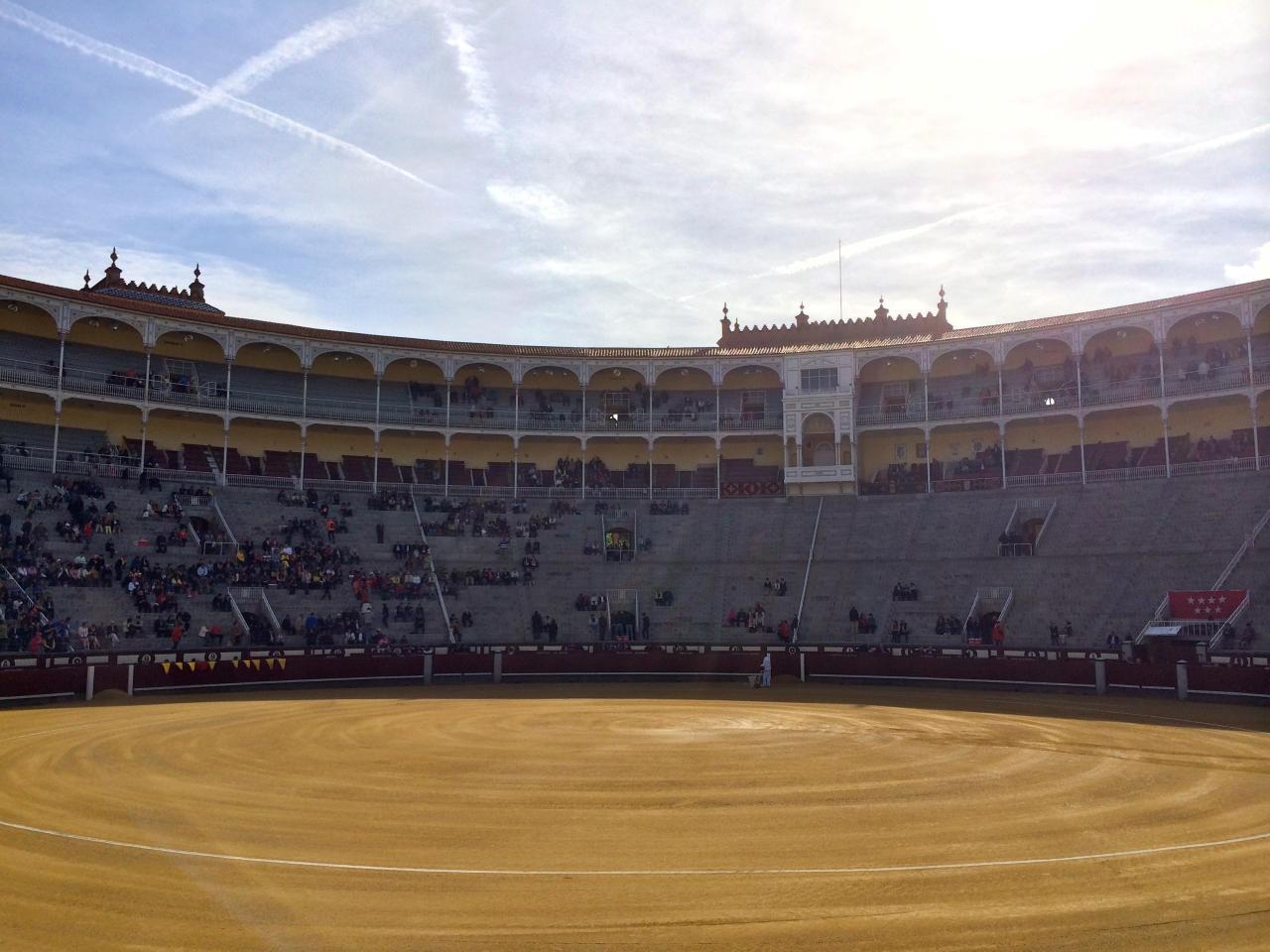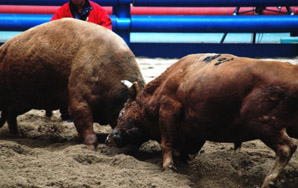I Watched 6 Bulls Get Slaughtered At A Spanish Bullfight
As a naive tourist from mild-mannered Canada, I just assumed it’d be more of a dancing-and-costumes kind of affair, punctuated by a grand finale where the matador gets too close for comfort before eventually letting him go.


Thick streams of blood were pouring down the sides of his spine as his attackers circled. They watched him stumble towards the dirt, the life slowly leaking from his legs.
They gave him a tap on the nose to keep his neck down. The final blow was imminent.
“How many more to go?” I asked the English dude sitting beside me.
“I’m not sure,” he responded, “But I’m starting to root for the bull.”
I booked my trip to Madrid on a whim. Beyond the bite-sized food, beautiful women, and dazzling weather, I knew next to nothing about Spain. But I quickly decided the next logical item on my itinerary was – what else? – a bull fight.
Bullfighting, or la corrida de toros, is far from a national pastime. In fact, it’s illegal in many parts of the country including the Catalonian city of Barcelona where I’d be spending the second half of my trip. If I wanted to catch a fight, I’d have to do it as soon as I arrived in the Spanish capital. So I grabbed my bags from the airport, raced to my hotel, and hopped in a cab to Las Ventas: the grand vestige of Spanish bullfighting.
Outside the iconic Salamanca stadium, the scene resembles any other North American sporting event. Merchants hawk snacks, programs, and souvenir t-shirts from their stands; the air is filled with a tingly mixture of excitement and anticipation.
I handed over my ticket and entered the concourse. It wafted with the thick scent of cigar smoke and the speedy buzz of Spanish chatter. It sounded like everyone’s voice was on 1.5x fast-forward speed. I grabbed a beer and took my seat in the front row where, by some crazy coincidence, I ended up next to a couple from a small Canadian town not far from my home. The husband had clearly done his homework.
“These matador guys…they’re like gods in this city. Treated like fucking rock stars. Top-tier athletes.”
His wife was less excited to be there.
“It’s a good thing the beer’s cheap” she said to me, her camera firmly tucked away in its case.
After several thousand spectators took their seats, the opening festivities began and soon a single trumpet signaled the start of the fight. The gates opened, and a thirteen hundred pound beast emerged.
Call me a fool, but I honestly didn’t realize they killed them. As a naive tourist from mild-mannered Canada, I just assumed it’d be more of a dancing-and-costumes kind of affair, punctuated by a grand finale where the matador gets too close for comfort before eventually letting him go.
It became very clear, very quickly, that I was wrong.
There are actually three stages to a traditional Spanish bullfight. The first, known as the tercio de varas, is comprised of your standard cape-waving trickery, as three banderilleros with large purple cloths begin to tease the beast with sweeping motions. Meanwhile, two horse-mounted picadors (lancers) armed with long spears take position. The banderilleros crowd the bull into a corner, eventually turning its attention to the horse.
And that’s when shit gets real.
The bull charges at the horse, trying to hook its horns underneath its belly to knock him down. (Thankfully, the horse gets to wear heavy padding that can’t be pierced – though up until the 1930s, this wasn’t the case and they were often gored. They’re also blindfolded.) The horses somehow manage to stand there fearlessly, almost stoic, as the ravenous bull smashes into their side. They never budge. In truth, they’re little more than a decoy, because as soon as the bull lowers its neck to make contact…
STAB
From up on his saddle, the picador jabs the bull with a long spear, aiming for a mound of muscle on the back of his exposed neck. The crowd erupts. This first hit is critical, as it begins the blood loss and starts to wear the animal down ahead of the matador’s entrance.

In the second round, banderilleros with barbed sticks take turns running at the bull and planting them into his shoulders, just narrowly avoiding his keratin horns. (The stabbing sticks are decorated with the native colours of the bull’s home region, which I’m sure he appreciates.) This continues the blood loss and by now the bull is understandably pissed. But also exhausted. His last stand is about to begin.
The final round is known as the tercio de muerte. This is the part you see in the movies. A cocky matador enters the ring in a flashy gold-trimmed outfit, holding a small red cape draped upon his sharpened sword. He begins with a series of daring passes, as the crowd rumbles with “¡OLE!” cheers each time the bull comes crashing past him.
There’s a lot of showmanship on display – hot dogging, if you will – as the matador shouts commands and accentuates his smoothest movements. He eventually maneuvers the bull into a stabbing position, prodding at his nose to keep his neck down. With his sword pointed outwards he lines up his shot, staring down the blade as if it were the barrel of a gun. The goal is to aim right in between his shoulder blades, stabbing him straight through the heart.
This is supposed to be a clean and final strike but a few of the matadors I watched needed an extra stab or three. One particularly resilient stud rose from the ground three times during his last stand, even sprinting across the ring in a final gasp before he went down for good. At that point, an executioner comes in with a hunting knife and slashes the bull’s spinal chord to dispel whatever last signs of life remained. They bring in a team of mules to drag the carcass out of the arena, and if the bull put up a truly amazing fight, they might drag him around the ring a few extra times before exiting. A victory lap, I suppose you’d call it.
“Are you going to the restaurant?” I was asked by the eager Canadian sitting beside me.
“What restaurant?”
“Oh, they serve the meat at a place just around the corner.”
They killed six bulls in two hours that evening. There were no shudders from the crowd, no shrieks from the balcony. Everyone watching knew exactly what they had signed up for.
Well, except for me, that is.
You’d have to be blind (and probably deaf) to ignore the blatant cruelty of this barbaric spectacle. But as with so many other things in this world, a powerful mixture of culture and tradition prevails, and the show goes on with or without you.
I’d later learn that on rare occasions when a bull is strong enough to survive a fight, he’s actually spared and sent back to his farm to live out the rest of his life in relative peace. But on this warm Spring day in Salamanca, as the sun stubbornly clung above the stadium’s skyline, the humans went 6-0. ![]()


